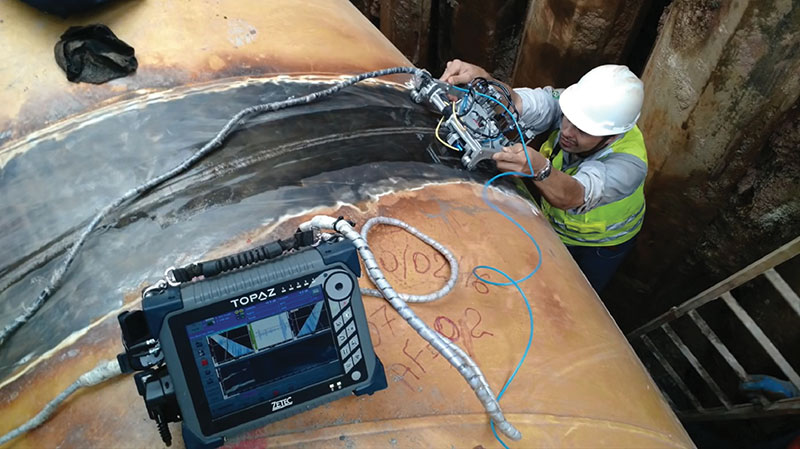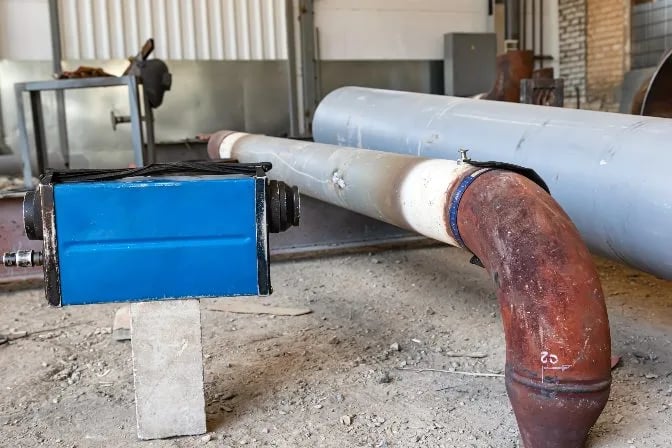Comprehensive Summary of Pipeline Welding Assessment Procedures
In the realm of pipe construction, guaranteeing the integrity and security of bonded joints is paramount. Pipe welding examination procedures play a crucial function in ensuring that welded connections meet stringent market standards and specifications. From thorough pre-welding inspections to comprehensive post-weld assessments, a well-defined assessment process is necessary for keeping the architectural strength of pipes. Understanding the details of welding examination treatments is not only a regulatory need however additionally a fundamental aspect of supporting the dependability of these vital infrastructures.
Pre-welding Inspection Preparations
Prior to beginning the welding procedure, thorough pre-welding examination prep work are essential to make certain the honesty and quality of the weld joint. These preparations include a meticulous examination of the products to be welded, the welding devices, and the work setting. By carrying out complete pre-welding evaluation preparations, prospective concerns can be determined and solved early on, leading to trusted and high-quality weld joints.
Welding Procedure Qualification
Detailed pre-welding inspection preparations lay the structure for the critical procedure of Welding Procedure Qualification, making sure the honesty and quality of the weld joint. Welding Procedure Certification (WPQ) is a crucial action in the welding process that includes testing and licensing welding procedures to ensure they fulfill details criteria and requirements. The WPQ process typically consists of welding procedure specification advancement, welding treatment credentials testing, and documentation of the results.
Throughout welding procedure specification growth, essential information such as the welding procedure, welding products, joint layout, and welding specifications are specified to create a comprehensive treatment. Ultimately, welding procedure qualification screening is performed to confirm the recommended treatment's stability. This testing usually entails welding examination discount coupons that undergo numerous mechanical and non-destructive tests to assess the weld's top quality and adherence to the defined requirements.
In-process Weld Evaluation
During the welding process, in-process weld assessment plays a critical role in making sure the quality and stability of the weld joint - Pipeline Welding Inspection. This kind of examination entails monitoring the welding specifications, evaluating the weld grain development, and identifying any kind of potential issues or discontinuities as they take place. By carrying out in-process weld inspections, welding operators can without delay attend to any type of issues that might emerge, thus preventing more problems and making certain that the final weld fulfills the required requirements
Typical approaches made use of for in-process weld assessment include aesthetic examination, fluid penetrant testing, magnetic bit click to find out more screening, ultrasonic testing, and radiographic screening. Overall, in-process weld examination is crucial for keeping the high quality and reliability of welded pipes.
Non-destructive Screening (NDT)
Non-destructive Testing (NDT) is an important method used in pipe welding inspection to evaluate the stability of weld joints without triggering damages to the welded framework. By using numerous NDT techniques, inspectors can assess the top quality of welds and identify any kind of problems or discontinuities that may endanger the architectural strength of the pipe. Usual NDT methods made use of click over here in pipeline welding inspection include Radiographic Testing (RT), Ultrasonic Screening (UT), Magnetic Bit Testing (MPT), Fluid Penetrant Screening (LPT), and Visual Testing (VT)
RT involves using X-rays or gamma rays to produce photos of the inner framework of the weld, allowing assessors to spot issues such as porosity, fractures, or insufficient fusion. UT utilizes high-frequency audio waves to identify flaws underneath the surface area of the weld, providing detailed info concerning the size and area of issues. MPT and LPT are used to recognize surface-breaking flaws by applying penetrant fluids or magnetic particles to the weld area. Additionally, VT includes aesthetic examination of welds to identify any type of noticeable blemishes.
Post-weld Assessment and Documentation


Documents of post-weld examination searchings for is necessary for preserving quality control records and guaranteeing compliance with sector standards and laws. Comprehensive reports should include details concerning the inspection approaches utilized, the place and nature of any kind of problems discovered, and any type of corrective activities taken - Pipeline Welding Inspection. Appropriate documents not only functions as a document of the weld's high quality yet likewise aids in future upkeep and examination processes
Conclusion

In conclusion, pipeline welding examination procedures play an essential duty in making sure the high quality and integrity of welds. In general, adherence to appropriate examination procedures is crucial to the success of pipeline welding jobs.
From thorough pre-welding evaluations to thorough post-weld analyses, a distinct examination procedure is important for preserving the structural soundness of pipelines. By conducting in-process weld assessments, welding drivers can quickly deal with any kind of concerns that may develop, consequently making sure and stopping further flaws that the last weld meets the called for specifications.
Typical methods utilized for in-process weld assessment consist of aesthetic evaluation, fluid penetrant testing, magnetic fragment testing, ultrasonic screening, and radiographic testing.Non-destructive Testing (NDT) is a vital approach utilized in pipeline welding examination to analyze the integrity of weld joints without triggering damage to the bonded structure. Post-weld assessment includes various approaches to examine the welds for defects, including visual assessment, color penetrant testing, magnetic particle testing, ultrasonic screening, and radiographic testing.